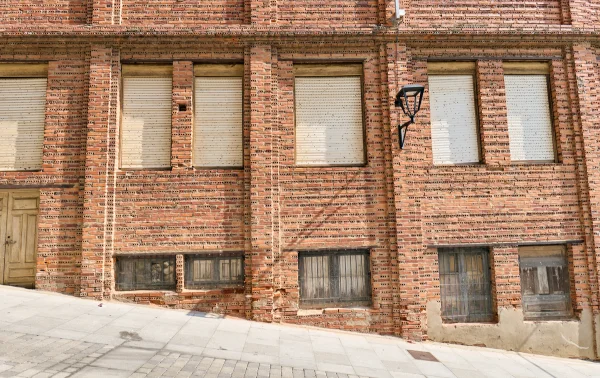Step into a modern office building, and you’ll likely spot a shiny plaque proudly displaying LEED certification. These days, it seems like every new construction boasts green features, from Apple Park to Google Bay View. But are these new buildings truly sustainable, or is it just another case of corporate greenwashing?
The truth is, when it comes to creating greener architecture, the key lies in repurposing existing structures.
Back in the late ’90s and early 2000s, LEED certification was a coveted recognition among architects dedicated to reducing the carbon footprint of buildings.
However, the rise of greenwashing has turned LEED into a status symbol, with even major corporations flaunting their Platinum, Gold, or Silver medallions. While innovations like biophilic design, water recycling systems, and photovoltaic glass contribute to sustainable building practices, the most impactful projects don’t start from scratch.
Rather than demolishing and replacing old, unattractive buildings that populate our cities, reworking these structures holds the power to significantly reduce carbon emissions, waste, and pollution in the built environment.
Every standing building represents the carbon and energy expended during its construction, meaning even a highly efficient new building could take several decades to offset its initial environmental impact.
Revamping existing structures through major renovations can cut down on 50 to 75 percent of the carbon emissions associated with new construction. That’s why the most sustainable building is the one that already exists, and fortunately, there are plenty of such buildings available.
The recent shift to remote work has caused a crisis in the office real estate market, leading cities to incentivize adaptive reuse—the process of transforming existing structures into new buildings with different purposes. One popular example is converting offices into housing, revitalizing downtown areas that have turned into ghost towns.
However, adaptive reuse isn’t always easy or straightforward. Converting a concrete office block into apartments with ample windows, or transforming a two-story strip mall into an office tower, poses significant challenges.
Nevertheless, given the alternative of complete demolition, which is financially and environmentally worse, we must embrace the idea that preserving value often requires a financial sacrifice.
Embracing adaptive reuse can have a massive positive impact on the climate. By avoiding the creation and disposal of materials inside existing structures—also known as embodied carbon—we can significantly reduce the carbon emissions associated with the construction of new buildings.
The global built environment contributes around 40 percent of global carbon emissions, with approximately a quarter of that attributed to embodied carbon. If we fail to increase the adoption of adaptive reuse, the projected doubling of the world’s building stock by 2040 to accommodate population growth will lead to a staggering spike in carbon emissions from demolishing and rebuilding structures.
Each existing structure contains core materials such as concrete, steel, and wood, all of which required carbon emissions during their creation, transportation, and assembly. Wood elements, in particular, store carbon captured by trees when they were alive.
Demolishing an existing building results in the waste of all the energy invested in its construction, along with additional energy required for the demolition process and transportation of waste materials to landfills. When you consider the energy and emissions needed to create, transport, and assemble materials for a brand-new building, it becomes clear that reusing what’s already been built is a far more environmentally sustainable choice.
To persuade clients and planners to choose the greener option, it’s now possible to quantify the carbon emissions saved by not rebuilding from scratch. Architecture and engineering firms can use software like OneClick LCA or EC3 to simulate scenarios for reusing existing materials and structures in new projects. This software also helps assess the financial value of old foundations, concrete, aluminum, wood, and other materials, enabling effective incorporation of existing structure elements. When a structure can’t be saved, materials can often be reused. For instance, one type of concrete can be broken down and repurposed into a different style of concrete.
This approach is becoming increasingly common in the industry, particularly with the LEED rating system incorporating it for the past five years, and with regulations in Europe codifying the practice. The LEED plaques adorning new buildings now reflect the acknowledgment that not everything about a construction is entirely new, and that elements of the structure have been repurposed from existing buildings.
In Europe, some architects have even embraced the concept of buildings as material banks, designing structures that store and preserve materials for future use. This forward-thinking approach allows for easier access to materials when demolishing buildings for new projects.
However, another school of thought focuses on creating buildings that are durable yet adaptable. By resisting the temptation to tear down and start anew, we can make architecture more sustainable and shift away from associating it with transient trends and fashion.
Consider the Martin Luther King Jr. Library in Washington, DC, one of the final projects of renowned architect Ludwig Mies van der Rohe. Initially celebrated, the library fell out of favor and was neglected by borrowers and librarians due to its dark, cramped spaces.

When the library system considered demolishing and rebuilding it from scratch, many objected, citing sustainability and aesthetics.
Eventually, the structure was renovated, retaining its Mies’ facade while incorporating green spaces, natural reclaimed wood, curves, windows, and sound to create a warm and beautiful space.

This revitalization preserved the building’s history, embodied carbon, and embodied the notion that architecture is an enduring legacy.
In conclusion, if we want to make a genuine impact on sustainable development, we need to prioritize adaptive reuse and repurposing of existing buildings. By avoiding unnecessary demolition and the subsequent carbon emissions, we can significantly reduce our environmental footprint.
It’s time to move away from the allure of shiny new buildings and embrace the beauty and potential that lie within the structures already standing, unlocking their value and preserving our planet for generations to come.



















